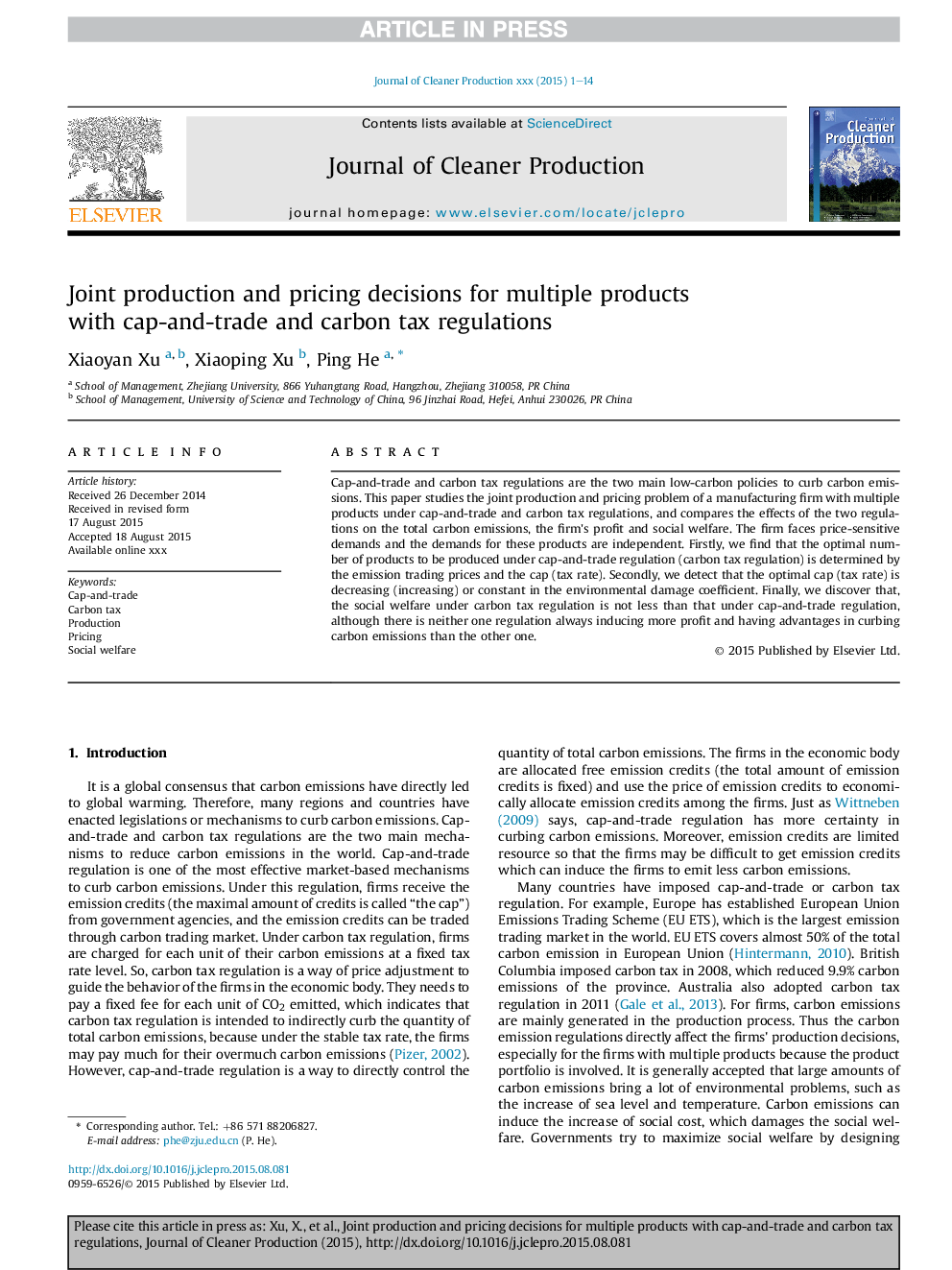| Article ID | Journal | Published Year | Pages | File Type |
|---|---|---|---|---|
| 10687952 | Journal of Cleaner Production | 2016 | 14 Pages |
Abstract
Cap-and-trade and carbon tax regulations are the two main low-carbon policies to curb carbon emissions. This paper studies the joint production and pricing problem of a manufacturing firm with multiple products under cap-and-trade and carbon tax regulations, and compares the effects of the two regulations on the total carbon emissions, the firm's profit and social welfare. The firm faces price-sensitive demands and the demands for these products are independent. Firstly, we find that the optimal number of products to be produced under cap-and-trade regulation (carbon tax regulation) is determined by the emission trading prices and the cap (tax rate). Secondly, we detect that the optimal cap (tax rate) is decreasing (increasing) or constant in the environmental damage coefficient. Finally, we discover that, the social welfare under carbon tax regulation is not less than that under cap-and-trade regulation, although there is neither one regulation always inducing more profit and having advantages in curbing carbon emissions than the other one.
Related Topics
Physical Sciences and Engineering
Energy
Renewable Energy, Sustainability and the Environment
Authors
Xiaoyan Xu, Xiaoping Xu, Ping He,
